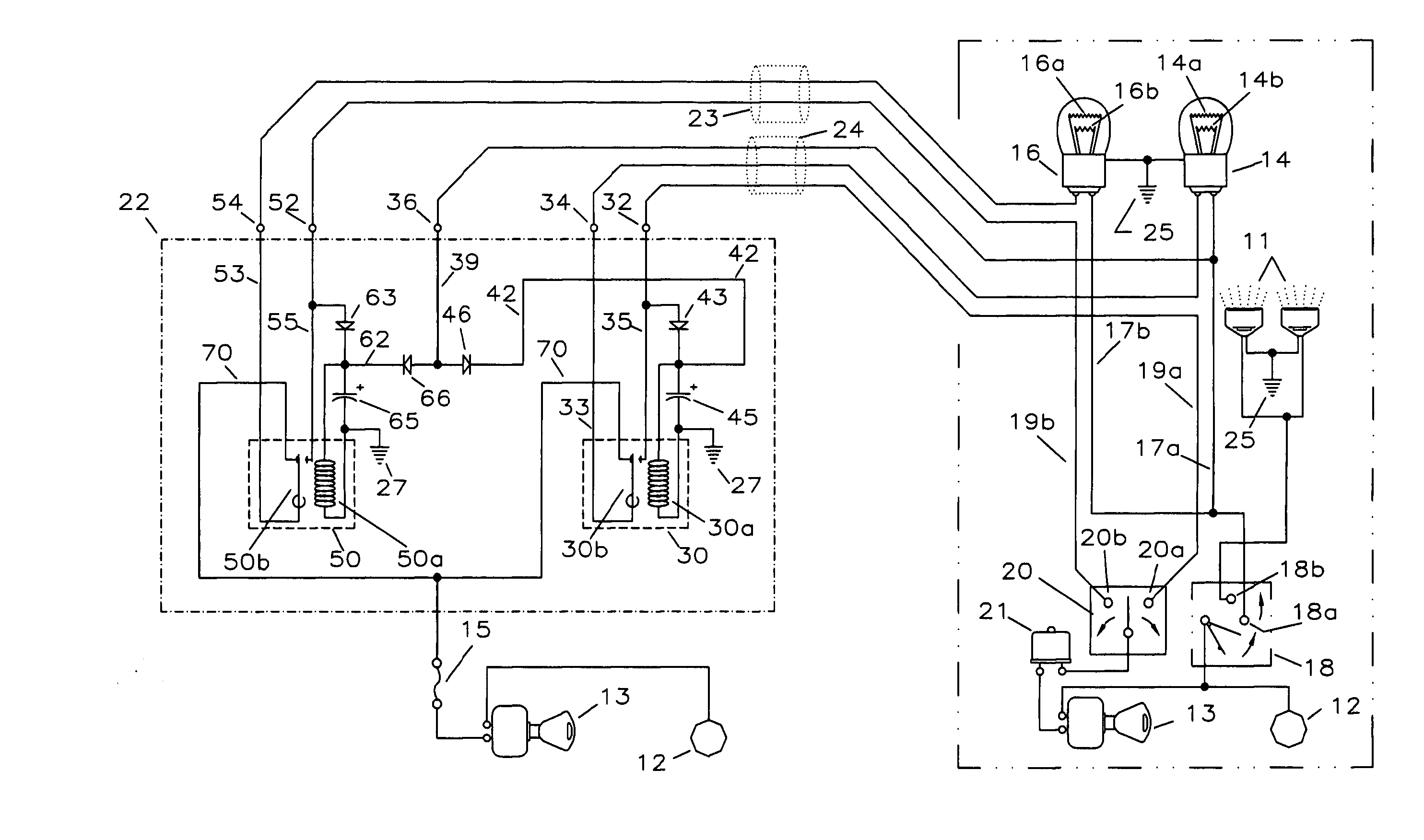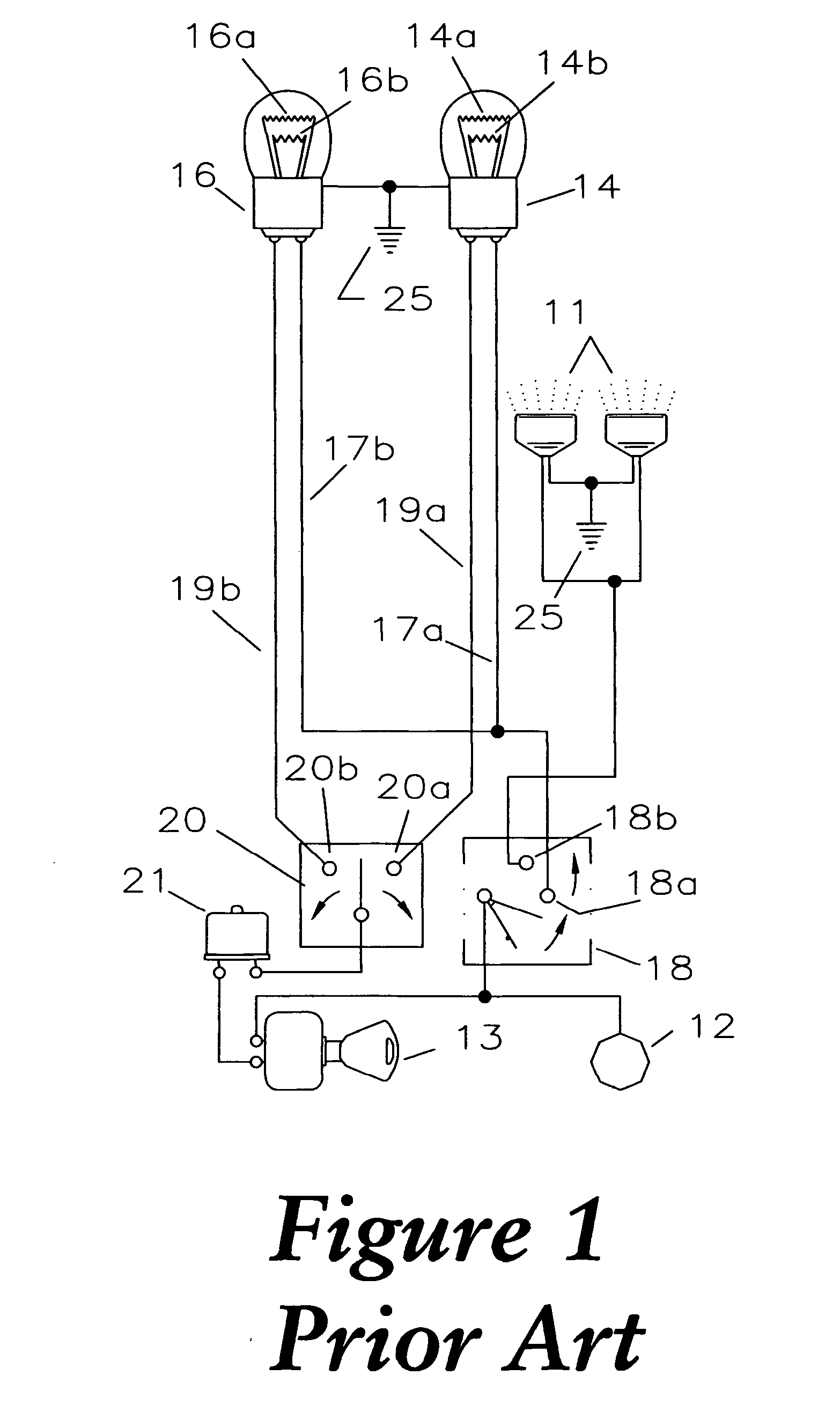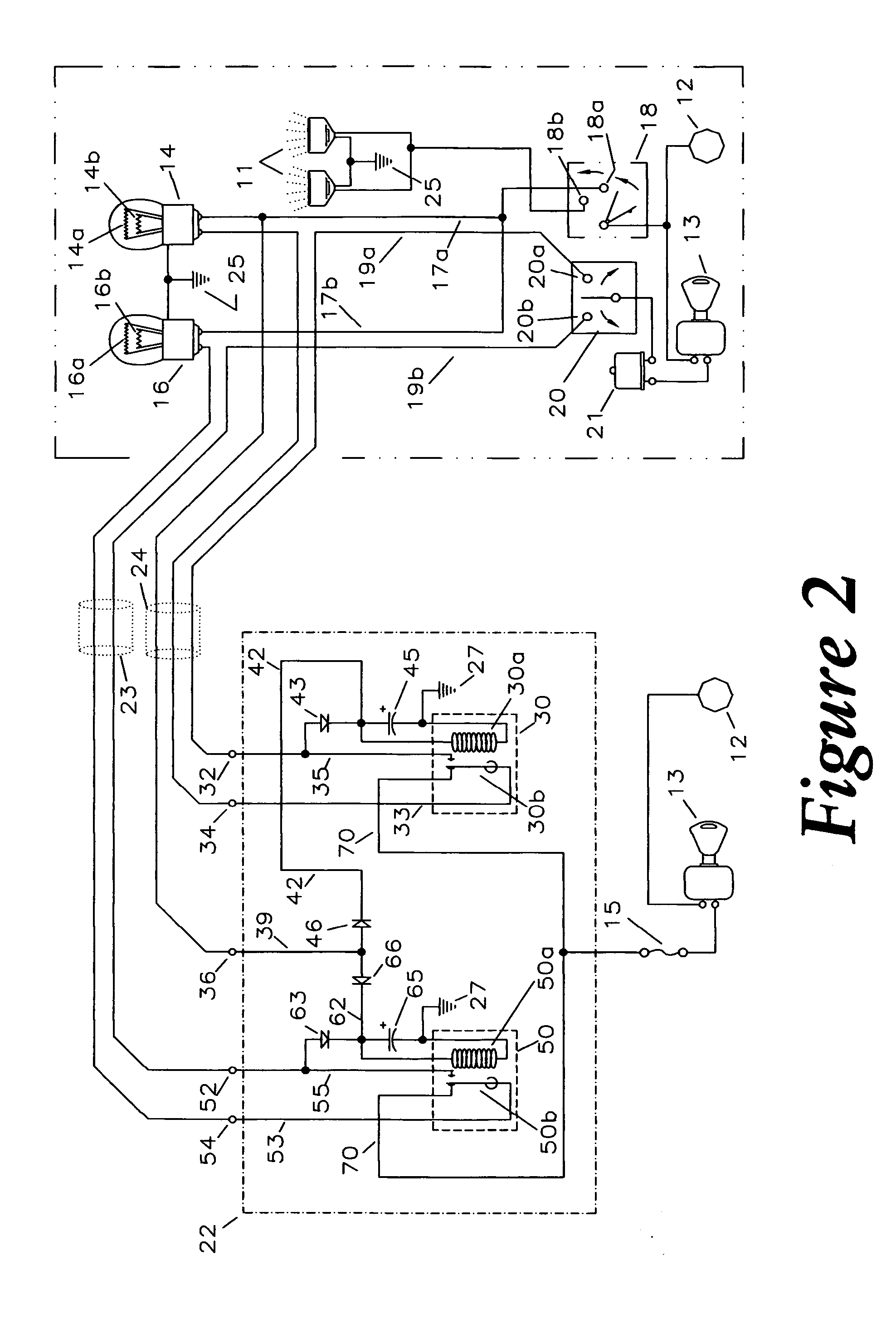Directional lamp daytime running light module and vehicular turn signal control system
a turn signal control system and daytime running light technology, applied in the direction of vehicle components, signalling/lighting devices, optical signalling, etc., can solve the problems of reducing the chance of being in a multi-vehicle accident, half of all multi-vehicle accidents occur, not required or practical, etc., to achieve comparative fuel economy savings and high efficiency
- Summary
- Abstract
- Description
- Claims
- Application Information
AI Technical Summary
Benefits of technology
Problems solved by technology
Method used
Image
Examples
Embodiment Construction
[0022] Referring now to FIG. 1, a conventional connection between a power source 12 and sets of automotive lights 11, 14, and 16 commonly found in most typical motor vehicles is illustrated. The power source 12 is a conventional vehicular power source, such as a 12-volt battery. The set of lights includes one pair of headlights 11, and a pair of front vehicular signal lights 14, 16 having dual filament bulbs. Traditional domestic and many newer import vehicle designs include a pair of front dual filament vehicular signal lights 14, 16 that are considered the front parking / turning lights. These front vehicular signal lights 14, 16 are typically integrated into the vehicle generally at the front right corner and the front left corner of the vehicle. The position of the front vehicular signal lights 14, 16 allow the operator to provide visible signals in traffic to other vehicles in close proximity to same vehicle concerning the operator's directional intentions in operation of that ve...
PUM
| Property | Measurement | Unit |
|---|---|---|
| light intensity | aaaaa | aaaaa |
| electrical current | aaaaa | aaaaa |
| voltage | aaaaa | aaaaa |
Abstract
Description
Claims
Application Information
 Login to View More
Login to View More - R&D
- Intellectual Property
- Life Sciences
- Materials
- Tech Scout
- Unparalleled Data Quality
- Higher Quality Content
- 60% Fewer Hallucinations
Browse by: Latest US Patents, China's latest patents, Technical Efficacy Thesaurus, Application Domain, Technology Topic, Popular Technical Reports.
© 2025 PatSnap. All rights reserved.Legal|Privacy policy|Modern Slavery Act Transparency Statement|Sitemap|About US| Contact US: help@patsnap.com



